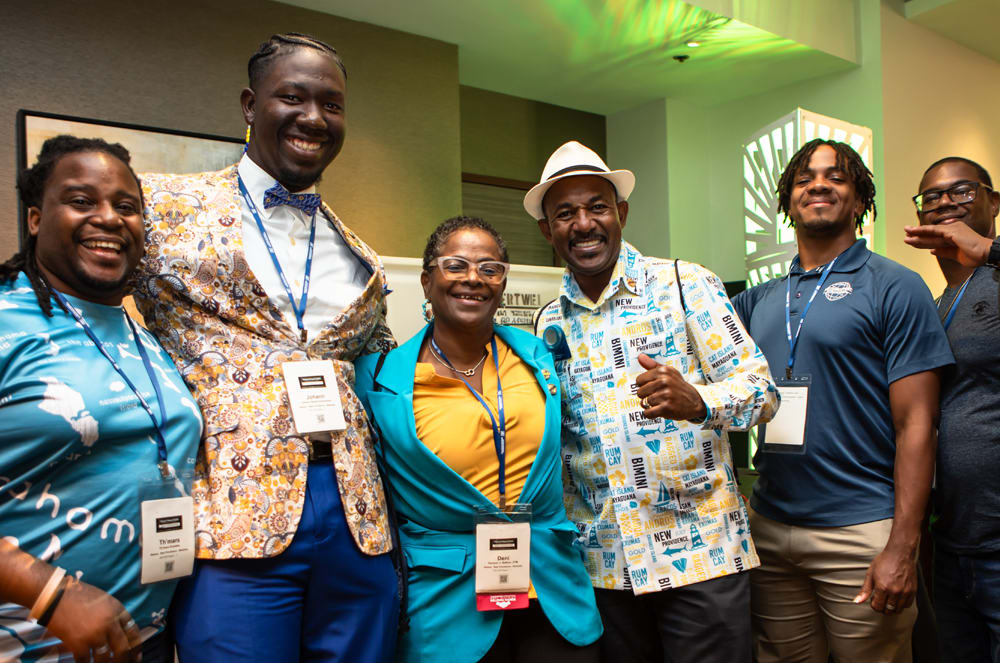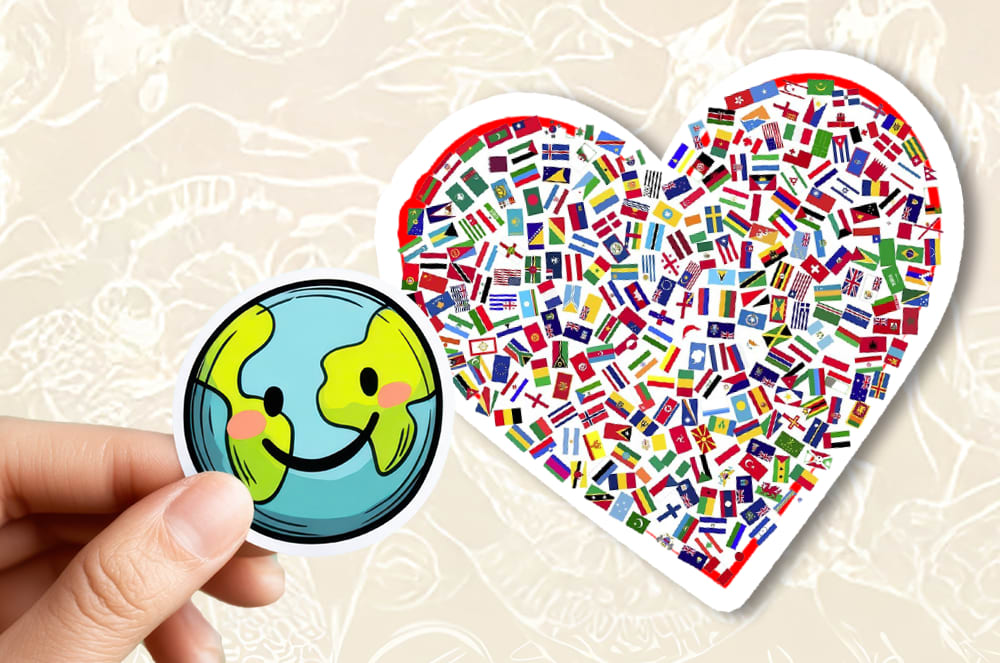
“When in Rome … ” the saying goes, so if you use humor in your global presentations (and who doesn’t?), that means adapting your humor to the culture in which you are presenting. Language, technology, and presentation style are all affected by culture, which will determine whether or not your audience perceives what you are saying as funny (even if you didn’t mean for it to be) … or not.
Let’s look at some ways you can adapt your language, the use of technology, and your style to guarantee your comedic success anywhere in the world!
Do You Speak My Language?
Let’s say you’re an English speaker presenting in a country where you know the majority of audience members are likely non-native speakers of English. Your words, both spoken and written, should be in the form of “global English,” which scrubs out local idioms, spelling, and pronunciation that an English-speaking presenter might use. For example, Americans in the United States might say, “Give me a ballpark figure,” which means “Give me an estimate.” Indians might say, “Can we prepone the meeting?” which means “Can we move the schedule to an earlier time?” These phrases are not easily understood outside of their culture and need to be avoided.
If you’re in a country that predominantly speaks a different language than you do, you might even be speaking through a translator, who may or may not have the same delivery skills as you do. Under these challenges, the worst thing you can do is deliver a joke. What makes the joke funny is often dependent on the listener understanding the subtle twists of language or cultural context. Many non-English speakers may miss the joke if they are not familiar with the language. Instead of relying on a joke, tell a humorous story that relates to who you are and the purpose of your talk.
As an intercultural consultant, my presentations are about understanding cultural differences, which provides me with lots of opportunities to talk about how I’ve misunderstood cultures, often with humorous outcomes. I was once discussing in Israel how different cultures interpret hand gestures differently. I demonstrated that while the thumb-to-forefinger sign means “Okay” in some countries, it is considered an obscene insult in Brazil. A similar gesture in Italy, with the palm held upward, means “Come on, get real.” When I asked the audience what it meant in Israel, someone shouted, “All of the above, plus ‘Hey, hurry up!’” The rest of the audience laughed in agreement. The story and the audience response worked far better than any punchline to a joke that I could provide.
When telling a story—or even just an anecdote—however, be sure that it doesn’t poke fun at the culture of your listeners. You wouldn’t intentionally do that, but unless you are sure your story could not be interpreted as doing so in other cultures, you might mistakenly and inadvertently cause unintended offense.
For example, I recall telling a story of how glasses of sake were continually being refilled by very gracious Japanese hosts of Western guests at a dinner in Tokyo, only to find out the next day from the very hungover guests that they continued to drink the sake because they didn’t know how to refuse it without offending their hosts. Outside of Japan, this story as presented would resonate with many audiences. However, in Japan, this story would need to be reversed so the joke was on the Western guests who didn’t understand the cultural obligation that the hosts had to keep the sake flowing when a cup was empty.
Always make sure that your stories and anecdotes cannot be interpreted as offensive in any way by any cultural audience. The best way to ensure that you are not being disrespectful and that your audience understands your language is by testing out your presentation with individuals from abroad ahead of time.
What makes the joke funny is often dependent on the listener understanding the subtle twists of language or cultural context.
The Challenges of Technology
Good presenters today must be comfortable presenting in traditional face-to-face formats, as well as in virtual formats. We need to be skilled using a variety of virtual platforms, ranging from Zoom and Webex-type webinar platforms to technologies specific to social media, like Instagram and YouTube. These virtual technologies offer the opportunity to present to groups both large (broad audience) and small (targeted audience) around the world, and often to listeners comprising many different cultural groups. However, virtual presentations pose many challenges, especially when trying to incorporate humor.
First, presenters need to be comfortable using their technology—from microphones, lights, and cameras, to the platform they choose to deliver their speech on. Always practice your presentation beforehand so that the technology becomes your friend, not your enemy. The last thing you want is to get flummoxed in your presentation because of a tech glitch you cannot solve.

Second, virtual audiences often do not provide the same feedback to the speaker that in-person audiences do. Because of this, it is essential that every story, especially when it involves humor, is pre-tested in a live setting before you use it in a virtual environment, and especially when crossing cultural lines.
Presentations with images and written words (e.g., PowerPoint) must also be culturally appropriate for everyone in the audience. Be sure to review all graphics and text for cultural appropriateness. Despite your best intention, any glaring, culturally inappropriate graphics or text will immediately distract from and undermine the quality of your humor. For example, while a graphic of an attractive female in fashionable dress might work in a presentation in Italy, it would be offensive, if not blasphemous, in Saudi Arabia.
Symbols can have powerful religious or political meanings that may be best to avoid in your presentation, and colors may carry different connotations in other cultures as well. For example, red typeface has a negative connotation in Korea, but signifies wealth and health in China. Even the degree to which text and graphics are used varies culturally. In Asia, for example, the use of symbols, numbers, graphs, and pictures is much more effective than text or words on a screen. However, in continental Europe, the use of bullet-pointed, logically connected text that represents concrete ideas leading to a final conclusion is highly effective.

A Matter of (Presentation) Style
You’ve worked hard at developing your presentation persona, your personal presentation style, and your “speaker brand.” But your style—or certain aspects of it—may be problematic in some cultures.
Good global presenters are aware that different cultures value different presentation styles and try to be flexible in their delivery to meet these cultural requirements. This doesn’t mean you need to change drastically or give up your authenticity. And it certainly doesn’t mean you have to behave more like the culture of your audience if it directly challenges your beliefs, personality, or comfort zone. But it does mean that small adaptations to your style can bring big rewards, especially when it comes to humor.
Some cultures, for example, value participation and audience involvement. They eagerly respond to invitations for comments, thoughts, and engagement. In fact, in cultures such as Nigeria, South Africa, India, Israel, Brazil, and many others, you may not have to solicit their involvement, as they will eagerly jump in with questions, thoughts, and ideas, whether you ask for them or not. Other cultures, such as Japan, China, and Indonesia, might be very reticent to offer opinions and questions, and expecting audience involvement in these cultures during your presentation might not work.
When incorporating humor into your speech, it’s important to be aware of how it will come across to your audience. For example, making yourself the object of what is funny—as opposed to making someone else the object of what is funny—can be a very effective way of telling a humorous story in Latin America, where it will elicit empathy for your travails. However, making yourself the object of the joke in Germany might be interpreted as making yourself look foolish, and elicit more pity than empathy.

Humor that is based on sarcasm can be valued for its sharp-edged cleverness and even abrasiveness, successful in cultures such as France, Russia, India, and others. However, it more likely would be seen as hurtful, and unfunny, in much of Latin America and the Middle East. Humor that is based on irony works well in Great Britain, Ireland, and Australia, but would not be recognized as funny in Germany.
How can you adapt to these expectations while remaining authentic to yourself and your personal presentation style? Recognize where your style might differ from that of your audience and identify what small changes you can make to accommodate these expectations. In most cases, you’ll find that even when your presentation style differs from that of your audience, the differences are not that unfamiliar.
It’s funny how culture plays a crucial role in determining what’s funny—and what’s not. As presenters, we can learn to be effective in telling a joke or funny story in our home country, but it takes skill and practice—and cultural knowledge and awareness—to ensure the success of a humorous anecdote or story presented to an audience in another country. For those of us who earn a livelihood presenting today, this is no laughing matter.
Dean Foster has been providing intercultural consulting for global organizations for over 30 years. He has worked in over 100 countries, is the author of five books, and the host of the podcast, Oops, Your Culture’s Showing! Learn more at deanfosterglobal.com.
Related Articles

Cross-Cultural Communication
How Does Humor Translate?

Cross-Cultural Communication



 Previous
Previous

 Previous Article
Previous Article